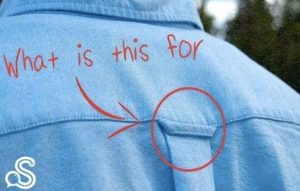What’s the Purpose of That Loop on Your Shirt? Here’s What It’s Really For
Have you ever noticed a small loop on the back of some of your shirts? If you’ve worn men’s dress shirts, especially button-downs, you’ve likely seen this detail. It turns out, this little loop has a practical purpose that many people aren’t aware of.

The loop, commonly found on casual and button-down shirts, was initially added as a functional feature. For those who frequent the gym or need to remove their shirt while on the go, the loop made it easy to hang the shirt without needing a hanger or closet. Rather than draping your shirt over a chair or shoving it into a gym bag, the loop allowed you to simply hang it up wherever convenient.
Interestingly, this loop also had a symbolic meaning at one point. In the past, if the loop was cut off, it signaled that the wearer was in a relationship. Essentially, it was a way of saying, “I’m taken.” Today, though, the loop has lost this meaning and is now just a decorative part of the shirt’s design.
American fashion has evolved significantly over the past century, but some things have stayed the same. The loop on the back of men’s shirts, for example, has stuck around, even as its purpose has faded from common knowledge.
Known as “locker loops” or “fairy loops,” these small details were originally used by sailors to hang their shirts while onboard ships. Later on, the loop became part of mainstream menswear, especially in the 1960s when Ivy League students adopted the style. According to the clothing brand Gant, which helped popularize the button-down shirt, this looped feature was a common sight on college campuses, particularly in Ivy League schools.
So, next time you spot that loop on your shirt, you’ll know its original purpose—to hang your shirt easily or, at one point, to signal your relationship status. While the meaning may have changed, the loop remains a subtle nod to both practicality and fashion history.





